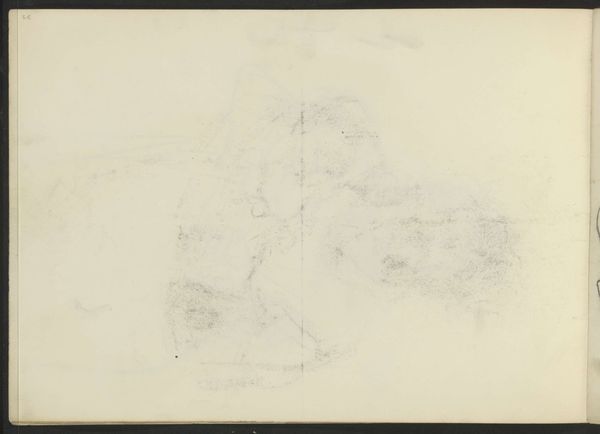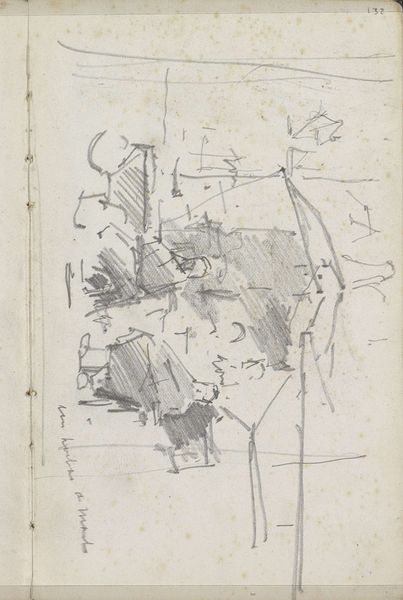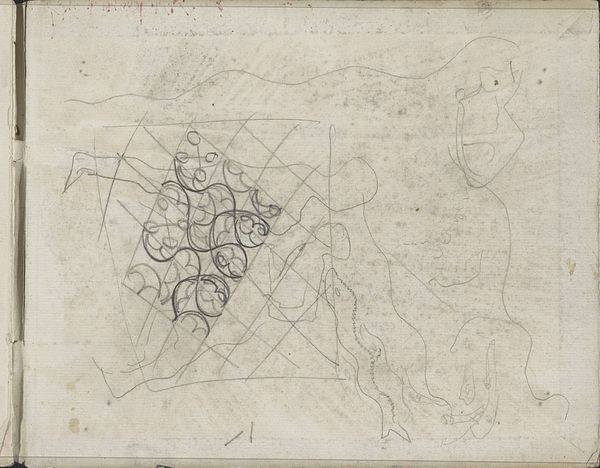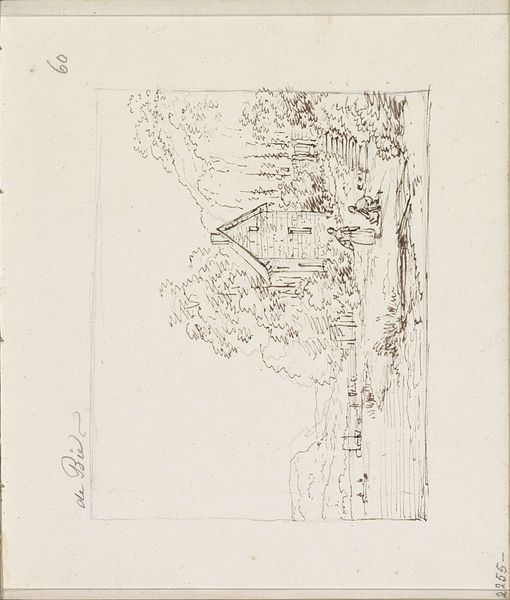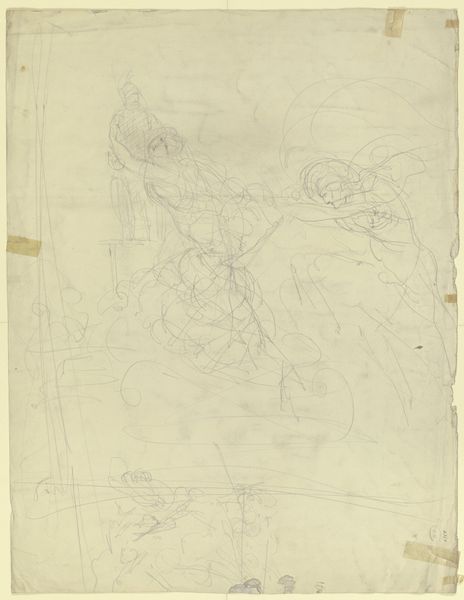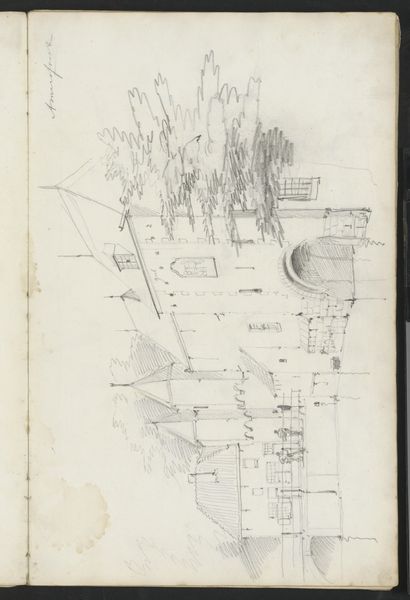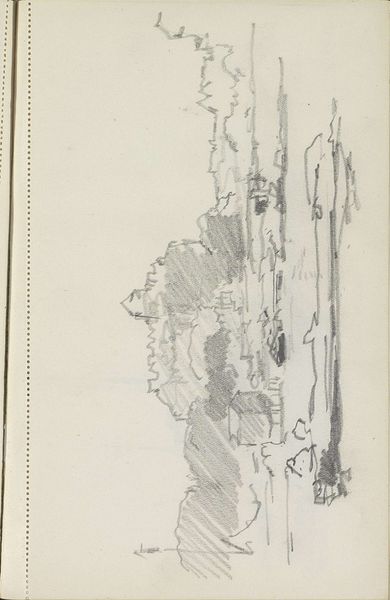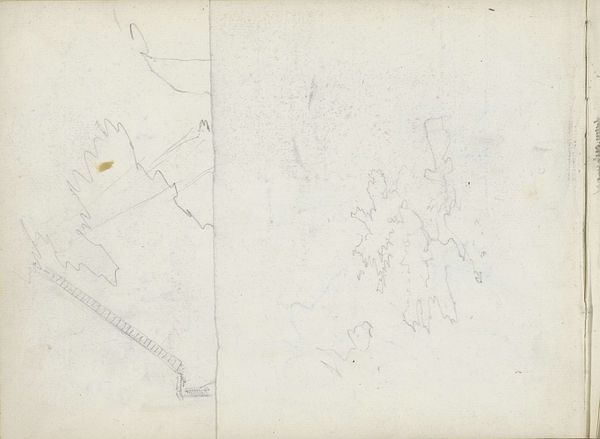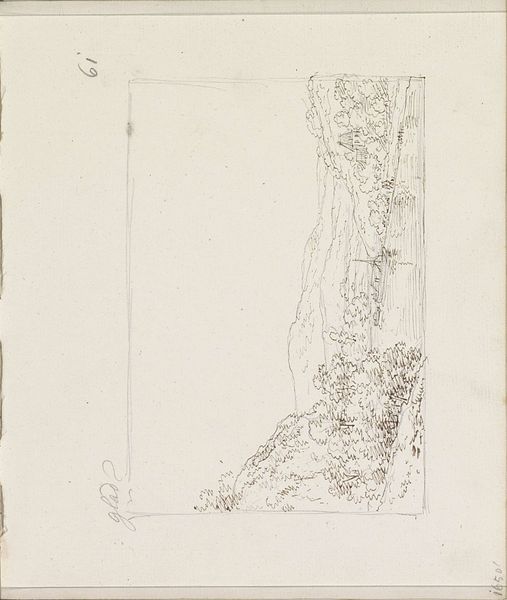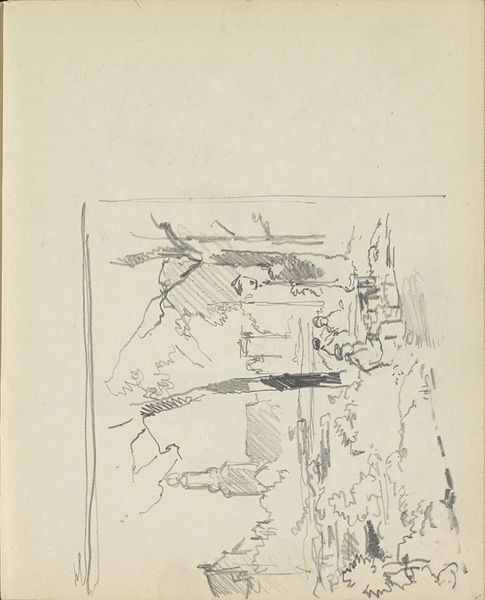
drawing, ornament, paper, pencil
#
drawing
#
ornament
#
art-nouveau
#
pencil sketch
#
etching
#
paper
#
geometric
#
pencil
Copyright: Rijks Museum: Open Domain
Curator: This drawing, currently held at the Rijksmuseum, presents an intriguing fleur-de-lis ornament set against a diamond pattern, dating back to around 1916. The artist is Reijer Stolk. Editor: It’s such a delicate piece. It feels very tentative, like a sketch exploring ideas rather than a finished work. The repeated geometric structure gives it this understated harmony, but the light pencil strokes convey a sense of ephemerality. Curator: The diamond pattern suggests a context of designed space, possibly wallpaper or a textile design. The fleur-de-lis, a symbol steeped in French royal history and heraldry, likely played a crucial role within the social and cultural symbolic language of the early 20th century. Editor: Exactly. I'm thinking about the materials at hand - the pencil, the paper, and how these commonplace items were used for something that could have been for mass production, not unlike a production line churning out wallpaper or fabric. Did this become a printed design, or was it a step on the path to a bespoke commission, hinting at class structures influencing decorative arts at that time? Curator: That's a keen question. Ornamentation became widely accessible thanks to new technologies like mass printing during this time. Understanding where Stolk’s drawing fits into those social and production systems is vital. Editor: You're spot on. What tools shaped these delicate shapes? Are these individual freehand sketches, or could there have been pre-made stencils for speed and repeatability, transforming labor-intensive art to decoration suitable for wider consumption? Curator: Studying his other work and design precedents from that period might unveil some of Stolk’s aims. It also makes us think about what constitutes a drawing versus a design – considering these objects reflect ideas around nationalism, luxury and craftsmanship as political tools after WW1. Editor: Ultimately, it's fascinating how this single drawing leads us to ponder mass production, societal markers and the humble origins of what could easily be a repeated adornment found within many houses. Curator: Precisely, a little doorway into broader cultural dialogues that characterized the early twentieth century!
Comments
No comments
Be the first to comment and join the conversation on the ultimate creative platform.

